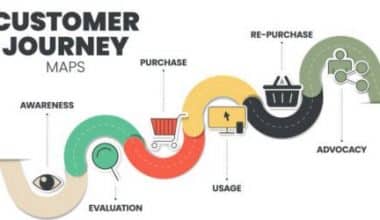A business starts with a customer-value idea. If someone wants a table, we can make it, sell it, ship it, and collect payment. That’s our business model. Revenue keeps our train running. Depending on the business model’s complexity, revenue will cover manufacturing, distribution, marketing, and other costs until we profit. We’ll define the revenue model and the relationship between business models and revenue streams. We’ll also analyze different types of revenue models and look at examples to compare their pros and cons. Finally, we’ll discuss recurring, SAAS, and subscription eCommerce revenue models and how to choose or develop one.
What Is Revenue Models?
Revenue models show how a startup business will earn revenue and cover operating costs and expenses. This model measures a company’s pricing strategy and product sales profitability.
A revenue model is a business model that generates customer value. However, these terms are related. A revenue model explains how a company makes, distributes, and sells products for profit.
What Is the Purpose of Revenue Models?
A revenue model manages a company’s revenue streams from different demographics and locations.
A revenue model can help a business grow and thrive. Companies use a revenue model to determine how much money they will need to target their sales and marketing, develop new goods and services for customers, and determine their place and future in their market. Without a revenue model, startups can incur unsustainable costs.
Types of Revenue Models
Before we list the types of revenue models, remember this. Google “revenue models” and you’ll find no universal list. Some of the examples of revenue models we give are different from others.
These examples will help you choose business revenue models. Let’s dive in
#1. Subscription Revenue Model
Recurring subscriptions generate income (typically monthly, quarterly, bi-annually, or annually).
Pros:
- Predictable and consistent revenue (monthly recurring revenue!)
- Scalable
- Flexible
Cons:
- Customer retention should be as important as customer acquisition.
- Its popularity has caused competition.
Companies using subscription revenue:
- Hubspot
- Netflix
- Blue Apron
- ClassPass
As more companies realize the benefits of recurring revenue, the subscription revenue model has become popular. Despite the rise in new companies using this model, it’s old. Consider gyms and country clubs. You pay a recurring fee for these services.
#2. Transactional Revenue Model
How it works: You make money by selling single or multiple products.
Pros:
- Sales process simplified
- You can repeat a profitable acquisition channel.
- You have many options.
Cons:
- Scaling can be costly.
- Testing acquisition channels is expensive.
- Inventory and returns are a pain.
Companies that use the transactional revenue model:
- Casper
- SlideSalad
- Target
As shown in the three examples above, transactional revenue models cover a wide range of companies. Casper is an online-only retailer. SlideSalad sells online digital products. Target has a traditional storefront.
#3. Service-Based Revenue Model
How it works: Sell your time, expertise, or labor for a set price.
Pros:
- Cost-effective startup
- Profitability
- Beginner-friendly
Cons:
- Scaling is difficult.
- Hands-on
- Growing revenue requires acquiring and retaining customers.
Companies using service-based revenue:
- 1-800-Got-Junk
- TruGreen
- Stanley Steemer
Our oldest revenue model is service-based. Since humans have existed, they’ve traded services. This model lets you build a business of any size.
#4. Advertising Revenue Model
How it works: Selling ad space makes money.
Pros:
- More popular audience, more revenue.
- Businesses always need advertising, so it’s evergreen.
Cons:
- First, target your audience.
- Your success depends on your audience. Advertisers won’t buy ad space without an ROI.
Companies that use the advertising revenue model:
- Spotify
- Morning Brew
If you’ve ever seen a company that makes a ton of money but doesn’t sell anything to its users, it may be using an advertising revenue model. Long ago, many Facebook users didn’t know what Facebook sold. Users realized they were Facebook’s product. Facebook sells user attention.
#5. Commission Revenue Model
You earn a commission by recommending products and services.
Pros:
- You don’t need inventory or sales.
- It can become passive.
Cons:
- Audience required.
- Maximizing commission requires negotiation.
Companies using commission revenue:
- Mint
- Airbnb
- Upwork
With commission revenue, you make money as a broker or affiliate. It matches buyers and sellers. You only make money on successful transactions, unlike advertising. Through product recommendations or a marketplace.
Mint recommends financial products to its users to generate revenue. Personal finance enthusiasts use them. Banks, credit card companies, and other financial companies pay Mint a commission for each successful sale.
#6. Donation Revenue Model
How it works: you make money from donations.
Pros:
- Free product/service access helps attract customers.
Cons:
- It’s hard to sell something you’re giving away for free.
- Your revenue is unpredictable because it depends on people’s generosity.
- Profiting is difficult.
Companies using donation revenue:
- Wikipedia
- PBS
- St. Jude’s Children’s Research Hospital
Companies that use the donation or “pay what you want” revenue model usually have a social cause. These businesses provide information, medical services, or other social goods beyond making money.
Other Revenue Models Examples
These are some common revenue models, but not all. Other revenue models:
- Interest revenue model: Financial institutions use it. (Ally/Quicken)
- Renting/leasing revenue model: You make money by renting out your property. Holiday Inn/Hertz
- Licensing revenue model: You make money by licensing your intellectual property for a specified time and use case. Disney/Hasbro
Combining Multiple Revenue Models
Many of the companies we cited as examples for each revenue model use a combination of models. This strategy diversifies their revenue streams. Spotify uses both advertising and subscription revenue models. Their free service is ad-supported, and their premium service is subscription-based.
Recurring Revenue Models
Recurring revenue models let businesses trade access to products or services for regular payments. Here are five types of recurring revenue models:
Usage-based billing:
Regular billing occurs for customers. Zapier uses a recurring revenue model. Their prices range from $0 to $250 per month based on automation.
Pros: Uneven usage can be costly. Low to mid-volume users will benefit.
Cons: Unpredictable business revenue due to customer usage fluctuations and unexpected customer costs. High-volume customers may not benefit.
Usage-based models work for businesses that can easily track usage, such as emails/messages/invoices sent, APIs used, or triggers activated.
User-based billing:
Teams pay monthly or annually for “seats” or product users. Atlassian charges $7 per user per month for teams of over 10 people.
Pros: Predictable revenue, scalable for large/enterprise teams. No tracking is needed.
Cons: Cost-conscious teams may limit seats to save money. When it doesn’t match product value, you lose money.
User-based billing works for team collaboration and customer service tools.
Tiered billing:
This pricing has ‘tiers’. Each tier is capped for a specific buyer persona. When a user reaches a tier’s limit, they’re upgraded to the next tier with more functionality or use. Hubspot’s Basic, Pro, and Enterprise tiers are popular.
Pros: It appeals to a wide range of users and their needs, so there’s something for everyone. It helps businesses understand customer value.
Cons: Something for everyone can quickly become sprawling and complicated.
Businesses that sell or market products use it.
Hybrid Billing:
This model mixes aspects of multiple revenue models. Both Zapier and Atlassian have hybrid pricing, where hitting certain usage levels or user counts requires upgrading.
Pros: It’s a flexible way to structure pricing, allowing businesses to overcome the disadvantages of a single model with value-based pricing.
Cons: It may add complexity, so businesses must work to keep hybrid models simple.
SaaS businesses whose customers’ value isn’t easily categorized.
Freemium:
Freemium offers a free plan with a premium upgrade to convert free users into paying ones. Evernote, Dropbox, and Buffer are freemium.
Pros: Easy access. It’s easier and faster to gain customers.
Cons: Businesses could lose money servicing new customers and be unable to give paying customers enough time and attention. It could attract customers who value the ‘free’ part of your freemium model.
It works for businesses where the cost of servicing free customers is low and the potential to convert them into paying customers is high.
Building Recurring Revenue Models Based on Value
Finding the right recurring revenue models helps businesses and customers exchange value fairly. Companies often undercharge. Overcharging leads to obvious consequences. When price and value don’t match, customers churn and find other SaaS solutions.
Identify and align your recurring revenue models with a value metric to determine a fair exchange. You can price your offerings optimally for you and your customers, resulting in growth for both.
SAAS Revenue Models
SaaS (Software-as-a-Service) revenue models let users access cloud-based software for recurring fees. In SaaS, the provider hosts the app and its data in the cloud.
SaaS revenue models grew from the fact that on-demand software could be continuously updated. Companies no longer ship goods.
Why Are SaaS Revenue Models So Popular?
Most software companies are adopting SaaS. SaaS is a matter of time for those who haven’t switched. SaaS revenue models have several advantages such as:
#1. Continuous and reliable revenue stream.
This is the biggest perk. By adopting a SaaS model, software vendors can receive payments throughout the product’s lifetime. It’s easier to predict revenue and grow your product.
#2. Distribution scalability
Traditional CD printing and software installation require purchasing, printing, and managing physical distribution networks. SaaS relieves vendors of these complex components.
#3. Frequent updates to the user experience
Users expect ongoing value for their subscriptions, so software vendors must offer a top-notch user experience. SaaS revenue helps companies invest in improvements and deliver a relevant product.
For users, SaaS revenue models offer the following benefits:
Updates constantly
SaaS software is regularly updated and maintained, so users always have the latest version. They access updates live via a web browser, unlike other software.
Lower upfront prices.
On-premise applications required users to pay a lump sum and maintain servers. SaaS users don’t have to maintain underlying infrastructure, which can be less expensive over time.
Testing before use
SaaS allows users to try a tool before making a financial commitment. Some tools offer free basic features as long as users maintain an account.
Convenience
No user-installed software is required. A username and password give them access to an updated tool. They don’t need to install updates or read technical manuals to install the software.
Components of the SaaS Revenue Models
Below are the components of SaaS revenue models you should know about:
#1. Tiering, access, and authentication
People pay for SaaS software/product access. Before using the tool, each user must authenticate. Their access is usually limited to monthly subscription features.
#2. Cloud computing
Cloud technology helped SaaS succeed. It’s harder to charge a subscription for a CD used to download a program.
#3. Continuous value
SaaS software must provide continuous value. Consider a company that uses AR to rebuild factory floors, so managers can optimize space.
Subscription Revenue Models
Subscription revenue models generate revenue by charging customers recurring fees. Furthermore, subscription revenue models come from customers who pay regularly for a product or service.
What kinds of businesses use subscription revenue models?
The consistency of recurring revenue models makes subscription revenue popular even with unexpected businesses. All kinds of products and services have subscription models.
Almost every business could fit the subscription revenue models, but they’re best for a few:
Access to content: membership sites, videos, music, books
Subscriptions work well for companies that offer video, audio, or books. Netflix, Hulu, and HBO offer cheap, high-quality streaming videos. Those who have subscribed to Netflix for 5+ years have each paid over $500.
Access to services: SaaS, utilities, insurance, leasing
Service businesses can benefit from subscriptions.
Many software companies (including us!) now offer software as a subscription (SaaS). With traditional one-time software sales, developers must rely on clunky update systems to make changes and improvements. Offering remotely hosted software packages on a subscription basis makes it easier for software companies to improve their products over time. Customers don’t have to host or update the software.
Access to products: personal care, food, and pet care products
Many products are now monthly. Subscription products are usually convenient or curated.
Any product that needs replenishing is a good candidate for convenience subscriptions, from shaving (Dollar Shave Club) and groceries (Blue Apron) to pet food (Chewy) and coffee (Trade).
Subscription boxes are usually themed or market-specific. Monthly or quarterly, these subscription services deliver curated products.
5 Steps of the Subscription Revenue Models Cycle:
Every subscription company starts its five-step revenue cycle when a new customer subscribes.
- Acquire customers.
- Deliver consistent, high-quality service.
- Look for opportunities to upsell or cross-sell.
- Work to retain users and reduce churn.
- Rinse and repeat.
Revenue Models of Ecommerce
5 Common Ecommerce Revenue Models
Let’s examine business models before Ecommerce revenue models. A business model isn’t just about how your company will make money. A business model considers all aspects of your business, regardless of the type:
- B2C (business to consumer eCommerce company, i.e., a company selling directly to the public)
- B2B (business-to-business eCommerce company, such as a parts supplier selling to a manufacturer)
- C2C (consumer-to-consumer eCommerce companies, like eBay)
- C2B (consumer to business, such as a freelance writer or photographer selling their services to companies).
Here are the five most popular eCommerce revenue models.
#1. Manufacturer
A manufacturer creates a product from raw materials or pre-made parts. Ecommerce manufacturers can sell directly to consumers or use distributors.
#2. Distributor
Distributors buy from manufacturers and sell to wholesalers. A distributor handles passively received orders and actively promotes the manufacturer’s products to find new buyers.
#3. Wholesaler
Wholesalers help eCommerce retailers by buying products in bulk from manufacturers or distributors. A wholesaler’s only job is to fulfill retail orders.
#4. Retailer
A retailer buys from a distributor or wholesaler and sells to consumers. Some eCommerce retailers are also manufacturers.
#5. Franchise
An eCommerce entrepreneur pays for the right to sell under a franchise’s name. A franchisee adopts a franchise’s business model and can be a manufacturer, distributor, wholesaler, or retailer.
Factors to Consider When Choosing Revenue Models
Here are some tips for choosing the best business revenue models:
#1. Value.
The revenue model you choose should align with your value proposition, which outlines your product’s selling points. Sell or license your product? Are payments tiered? per-user revenue? Your revenue model should reflect your product’s consumer value.
#2. Customers.
Customer segments will help you determine your revenue model. Larger companies may need licensing instead of a subscription model.
#3. Competition.
How does your financial competition make money? Studying their strategies will help you determine if your model is more successful than others or if you should try a different approach.
Which are the 5 types of revenue models?
There are numerous revenue models available to businesses, including:
- Advertising model.
- Freemium model.
- Licensing model.
- Markup model.
- Production model.
- Subscription model.
What are 4 types of revenue?
Revenue streams are classified into four categories:
- Transactional
- Project
- Service
- Recurring.
What is the revenue model strategy?
A revenue model is a strategy for managing a company’s revenue streams and the resources needed for each. A business model is a structure that encompasses all aspects of a company, including revenue models and revenue streams, and describes how they all interact.
How do you make a revenue model?
The step-by-step revenue model for startups:
- Select a model that is appropriate for your business and allows you to communicate your value.
- Make a list of potential long-term revenue sources and investors.
- Create future projections.
- Go over the model and make any necessary changes.
- Identify and control the variables.
What is a revenue model example?
A high-traffic blog that places ads to make money is the most basic example of a revenue model. Web resources that generate public content, such as news (value), will use their traffic (audience) to place advertisements.
What is a sales revenue model?
According to the sales revenue model, you make money by selling goods and services to customers both online and in person. As a result, any business that sells products and services directly employs this model.
What is the difference between a business model and a revenue model?
Although they may sound similar, business models and revenue models are not synonymous. On the one hand, a business model describes how a company generates value (for both its audience and itself). A revenue model, on the other hand, describes how money flows from the customer to the firm.
What business model is best?
Let us explore.
- Servitisation (subscription) business.
- Platform-based business.
- Social, authentic business.
- Employee-centric business.
- Partner-centric business.
- Customer value-obsessed business.
- Constant-innovation business.
- Data-driven business.
How do you create a revenue model in Excel?
Create a financial projection in Excel from the ground up:
- Open an Excel sheet with your historical sales data.
- Choose data from the two columns containing the date and net revenue data.
- Select “Forecast Sheet” from the Data tab.
- Enter the end date of your forecast and click “Create.”
- Label and save your financial forecast.
Conclusion
We hope we’ve given you some food for thought. Your revenue model is critical to the success of your business. You don’t have a business if you don’t understand how you’re going to make money.
Revenue Models FAQs
What is a basic revenue model?
A revenue model is a blueprint that outlines how a startup business will generate revenue or gross income from its standard business operations, as well as how it will cover operating costs and expenses.
What is business model and revenue model?
Although they may sound similar, business models and revenue models are not synonymous. On the one hand, a business model describes how a company generates value (for both its audience and itself). A revenue model, on the other hand, describes how money flows from the customer to the firm.
Which business model is most profitable?
Project work. Project work is typically the most profitable of all business models
- RECURRING REVENUE: How to Calculate Monthly & Annual Recurring Revenue
- Saas Marketing: Overview, Plans, Agencies and Strategies (Updated)
- Saas Sales: Ultimate Guide to The Saas Sales Process and Metrics
- SALES COMMISSION STRUCTURE: 2022 Templates & Examples
- 10 Tips for Marketing Your SaaS Business Online






